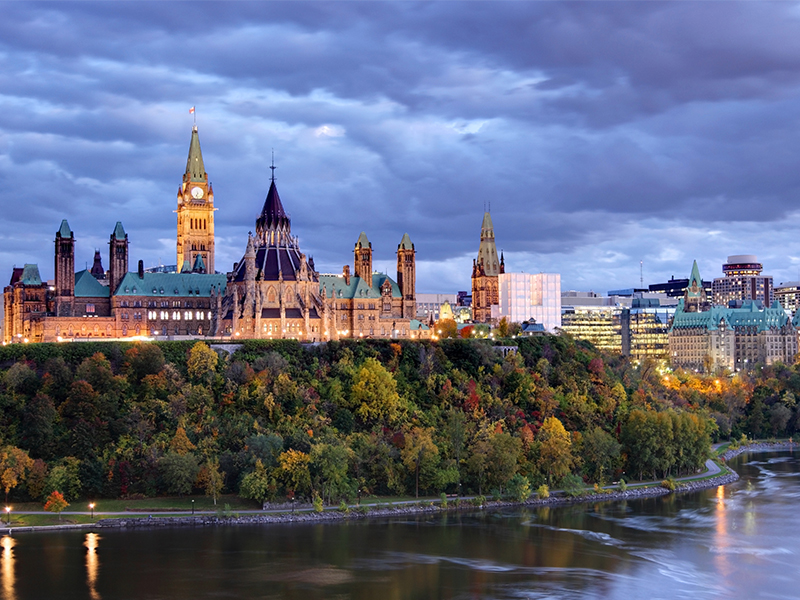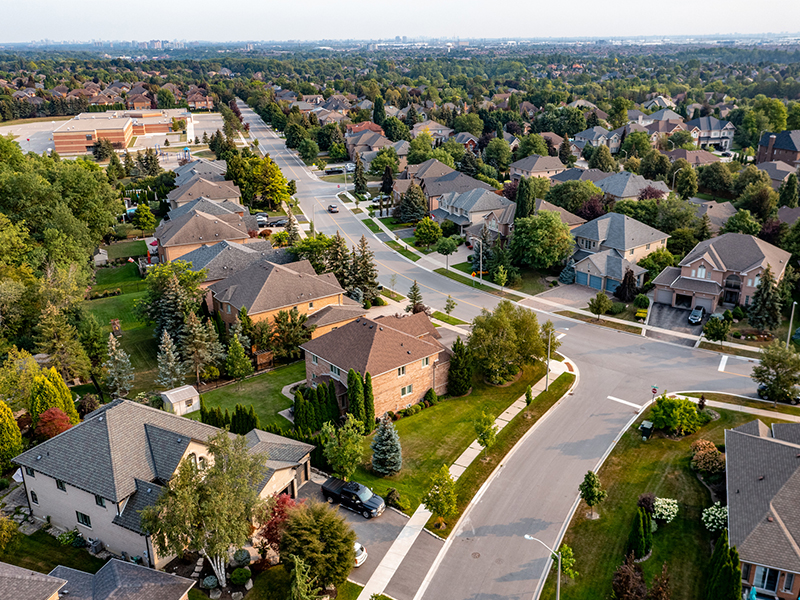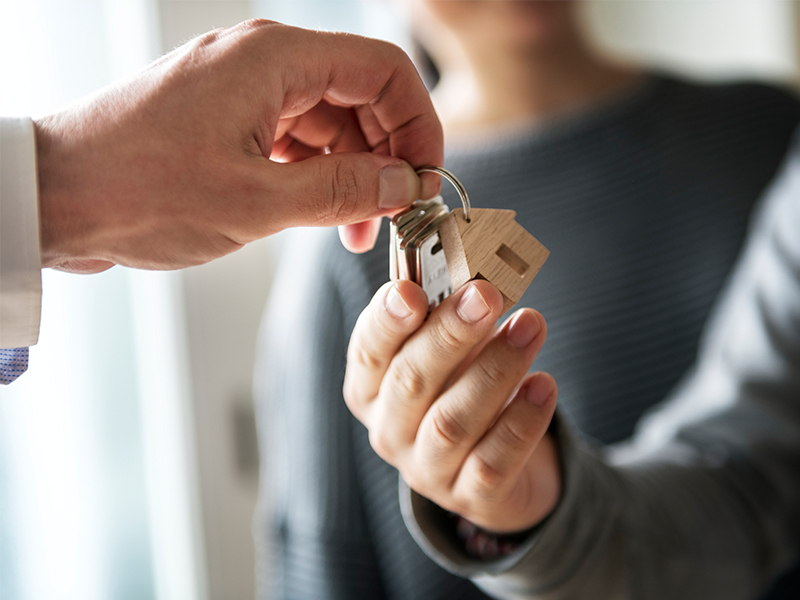
The population in Ontario, Canada was estimated to be over 14 million in 2021. This number is poised to grow further as more people move to the area to enjoy the quality of life, employment opportunities, cultural diversity, and vast natural beauty Ontario offers. Lifestyle brand Travel + Leisure has named a few places in Ontario as some of the best to live and visit in the country, which includes major cities Toronto and Ottawa, as well as small towns Elora and Niagara-on-the-Lake.
With the many appealing characteristics of the province, buying a house in Ontario has become the preferred choice for many buyers looking for their first home.
Table of Contents:
3 THINGS TO KNOW BEFORE STARTING THE HOME-BUYING PROCESS IN ONTARIO
- The Ontario real estate market
- Typical property types and features
- Home buyer programs
- Has not previously owned a property in Canada or abroad; or
- Has separated from and lives apart from a spouse or partner; or
- Purchased their first home more than four years before the most recent application.
In February 2024, the average sold price for homes was$873,207, up 6% from the previous month and 1.3% year-on-year. Despite the elevated prices, there were 12,787 home sales in Ontario, which is 15.6% more than the number of sales from the same period in 2023.
Inventory is also up. The number of active residential listings increased by 18% year-on-year, which is the highest number of listings for February in the last five years. New listings also experienced an upswing, posting a 26.8% increase from the previous year. At the same time, the sales-to-new-listings ratio in February was 51.5%, indicating a balanced market between buyers and sellers.
It’s important to note that Ontario is the second-largest province in Canada and is composed of more than 400 cities and towns. You will find mixed trends and varying activity levels across its many housing markets. The overall outlook, however, remains that of a steady recovery from a somewhat sluggish 2023 performance that was typical of the market nationwide.
Below are the typical types of houses for sale in Ontario:
Detached housesDetached houses do not share walls or are joined in any way with other homes. They have open spaces all around so sizeable front and back yards are common. These residences may come in the form of 1.5 to 2-storey houses, bungalows, split-levels, and cottages.
Semi-detached homes and townhousesThese homes are typically two or three storeys high and share one or two walls with other units. Semi-detached homes are often two dwellings attached together, each with private yard spaces but common-use driveways and fences. Townhouses are similar but are built in small clusters, with separate garages and rooftop patios as defining attributes.
PlexesMulti-family properties, often referred to as “plexes,” are also popular residential options. They normally have two (duplex), three (triplex), or four (fourplex) dwelling units housed under a single roof. The units are accessed through external staircases and have separate entrances and utility meters.
CondominiumsCondominium apartments are in high demand, especially in the bigger metros like Ottawa. These private residential units share common amenities like security, concierge services, pools, and other recreational facilities. Apart from convenience, many first-time home buyers also choose condos over buying a house in Ontario as they are a cheaper way to own property in the province’s urban areas.
There are several programs you can utilize to help fund your choice of property among the houses for sale in Ontario. To qualify, you must fall within the legal definition of a first-time home buyer, which is someone who:
These are only the basic criteria. The specific programs may apply more stringent definitions and will also have additional eligibility requirements.
Programs on the national level include the First Home Savings Account and the Home Buyers’ Plan, which allow eligible buyers to withdraw funds tax-free and use them to purchase a home. Potential tax savings are also available through the First-Time Home Buyers’ Tax Credit and GST/HST Housing Rebates.
On the provincial level, the Ontario Land Transfer Tax Refund program removes the land transfer tax obligation for those who purchase a property worth less than $368,000. Those who buy homes of a higher value may receive tax refunds of up to $4,000.
Some local municipalities have their own programs that provide additional tax rebates and/or down payment assistance to qualifying buyers.
GUIDE FOR BUYING A HOUSE IN ONTARIO
Here’s an in-depth look at the home-buying process in Ontario and the preparation involved to achieve a successful outcome.
Financing your home purchase
Step #1: Understand home ownership costsAll decisions related to the purchase must align with your finances, so getting the full monetary picture is the smartest place to begin. Homeownership costs are generally divided into two categories: upfront and recurring.
UPFRONT COSTS- Deposit – This is a monetary value you include in your formal offer to make it more attractive to the seller. For highly competitive areas in the Ontario real estate market, a deposit of 5% of the property price is customary. For smaller municipalities, on the other hand, a deposit of 1% might do the trick. Whatever amount you use for the deposit comes out of the total down payment required to finalize the sale.

- Down payment – This is the money you pay to secure the property. The minimum down payment depends on the purchase price:
- $500,000 or less = 5% of the purchase price
- Between $500,000 and $999,999 = 5% for the first $500,000 and 10% for the portion of the purchase price above $500,000
- $1 million or more = 20% of the purchase price
- Buyer closing costs – These legal and administrative fees to close the sale include appraisal fees, home inspection fees, real estate lawyer fees, title insurance fees, and taxes (sales tax, land transfer tax, and/or foreign buyers’ tax). There may also be closing stipulations for certain property types and features that will require additional fees.
- Home preparation and moving costs – Renovation and moving expenses can cost a substantial amount and should be factored into your budget.
Lenders may ask for a bigger down payment as well as mortgage insurance if you are self-employed or have a problematic credit history. Down payments of less than 20% also need insured mortgages.
- Mortgage – These are the amortized payments you make to the lender to fulfill the loan.
- Mortgage loan insurance – Premiums range from 0.6% to 4.5% of the loan amount. You can actually choose to pay this with a lump sum upfront, but the more conventional route is to tack it onto your mortgage.
- Property insurance – Insurance coverage for your home is a requirement when taking out a mortgage. It’s also a recommended expense to protect your investment in case unexpected events cause damage or create liability.
- Property tax – This is a tax paid for real estate ownership in a given municipality. Ontario property tax is computed based on the current value assessment of the property multiplied by the tax rate applicable to the property class.
- Utilities and other expenses – Your monthly utility bills and other fees like homeowners’ association dues are still considered homeownership costs and should be included in your financial review.
Among the considerations you have to make are interest rates, term flexibilities, and mortgage sources.
TYPES OF MORTGAGE BY INTEREST RATE- Fixed-rate – Under a fixed-rate mortgage, the interest rate you agree to at the beginning of your loan will remain unchanged throughout its term. This is ideal for borrowers who don’t want fluctuations in their payments. Fixed-rate mortgages have higher interest rates and prepayments come with penalties.
- Variable rate – Interest rates for this type of mortgage go up or down depending on Bank of Canada’s overnight rate. The risk is higher on this type of loan as the rates get steeper whenever inflation rises. However, variable rates are typically lower than fixed ones.
- Combination – This loan uses both fixed and variable rates. The part of the loan under a fixed rate provides partial protection when interest rates increase, while the part under a variable rate can generate some savings when rates decrease.
- Open – An open mortgage has the flexibility for increased or extra payments without penalties. It’s worth considering if you plan to sell your house in the near future or pay off your mortgage earlier than scheduled. The downside is interest rates tend to be higher for open mortgages.
- Closed – With this type of mortgage, you largely have to stick to the terms determined at the start of the loan. Some lenders allow prepayment privileges but on a limited basis. Any significant deviations from the terms incur penalties. Interest rates for closed mortgages are usually lower as compared to open mortgages.
- Traditional – Traditional mortgages are provided by major or minor banks, as well as credit unions that operate across the country. These lenders are regulated by the government and have stricter rules for loan approval. They offer longer terms and lower interest rates.
- Private – Private mortgages are provided by mortgage finance companies or individual lenders. These lenders offer alternative financing if a borrower’s income or credit score disqualifies traditional mortgage options.
- Work on your credit score – A good credit score opens up more mortgage options, as well as better terms and rates. It’s a must to review your score and make the necessary improvements before approaching lenders. You can do this while you’re saving up for a down payment.
- Seek pre-approval – At the pre-approval stage, lenders assess your financial standing to determine the maximum borrowing amount and the estimated payments. They may also allow you to lock in an interest rate for a certain period. It is highly recommended to get pre-approved when buying a house in Ontario as it enables you to build an accurate budget and increases your appeal to sellers.
- Shop around – Compare quotes from three to five providers so you can choose the option that is most compatible with your capacity and preferences of how to pay.
You’ll likely have an idea of what you want in a house but it’s important to ground your expectations with a budget. Now that you know all the costs involved and how much home you can afford, you can determine a realistic figure that should serve as your guideline moving forward.
You can do a preliminary search over the internet to see what kinds of homes are available in your price range and in which locations. From here you can further refine your home-buying wish list by assigning priorities to property features.
Doing it this way will make your search more efficient because you can zero in on properties that meet major priorities without exceeding your means.
Searching for your first home
Step #1: Check out the locale
A house that has all the characteristics of your dream home won’t be any good if it is unsuitably located, so it’s highly advisable to learn what you can about the neighborhood at the earliest possible stage. How accessible is it to healthcare facilities, schools, shopping centers, and other amenities? How far is it from your workplace? What’s the vibe like in the community? These are just some of the questions you should answer.
Step #2: Work with a real estate agentA real estate agent who is an expert on the Ontario home buying process is a resource you want to maximize. They can make property recommendations that best match your needs and advocate for your interests when dealing with the seller. Real estate agents are also fully immersed in their location specialties so they can give you insider insights on the area.
Step #3: View the propertiesTo accurately assess the property, you have to see it with your own eyes. It’s also a fun exercise that will make it easier to imagine how your home life will be if you push through with the purchase.
Step #4: Negotiate a deal that’s best for youThe negotiation phase is probably the most tense part of the process as you’ve already found a home you love and want to finalize everything ASAP. However, be prepared to engage in a little back-and-forth with the seller.
You can strengthen your negotiating position and protect your interests with the following strategies:
- Use market and property information to come up with a fair price.
- Start with a strong offer, but leave yourself with room to maneuver.
- Don’t forget to word in contingencies like mortgage approval and home inspection clauses that will allow you to back out from the deal if required.
- Boost your offer with concessions that solve some of the seller’s problems. For instance, you can propose to meet the seller’s closing timeline if they are in a hurry to sell.
Closing the deal
After the seller accepts your offer, you sign a purchase agreement, which effectively moves you to the closing phase of the sale. Closing typically takes 30 to 90 days when buying a house in Ontario.
Step #1: Get financing and mortgage approvalYour pre-approval is not a formal loan application, so you still need to trigger the final mortgage approval process. Do this as soon as possible after your offer is accepted because it might take several weeks. Finalize applications to any government-backed down payment assistance programs as well.
Step #2: Conduct a title search and secure title insuranceA title search is necessary to verify if any legal obstructions will impact the ownership of the house. Title insurance provides the buyer coverage in case any title issues crop up in the future.
Step #3: Complete inspectionsTo ensure that the property has no hidden problems and safety risks, commission inspections, which may include a property survey, an environmental assessment, and other protocols in addition to the standard home inspection. You’ll also want to do a final walk-through when your closing day is near, so you can check that the house is in the same condition as when you signed the purchase agreement, or that any contingencies have been met.
Step #4: Closing day
The final actions to complete the transaction are done on closing day. These include:
- Signing of all legal documents
- Fulfillment of down payment, plus any outstanding fees and taxes
- Legal transfer of ownership
- Turnover of the keys to the property
Then finally, congratulations are in order because you’re a newly minted homeowner!
FIND YOUR FIRST HOME IN CANADA’S HEARTLAND
We at the Golfi Team understand the unique challenges that come with entering the Ontario real estate market for the first time. Over the course of almost three decades in the industry, our team, under the leadership of top agent Rob Golfi, has helped countless buyers successfully purchase their first homes in Toronto, Niagara, Hamilton, and other locations across the province.
We’d love to help you with your homeownership journey, too. Contact us at 1.800.288.9184 or 1.905.575.7700. You can also reach us via email or send inquiries through this form.

